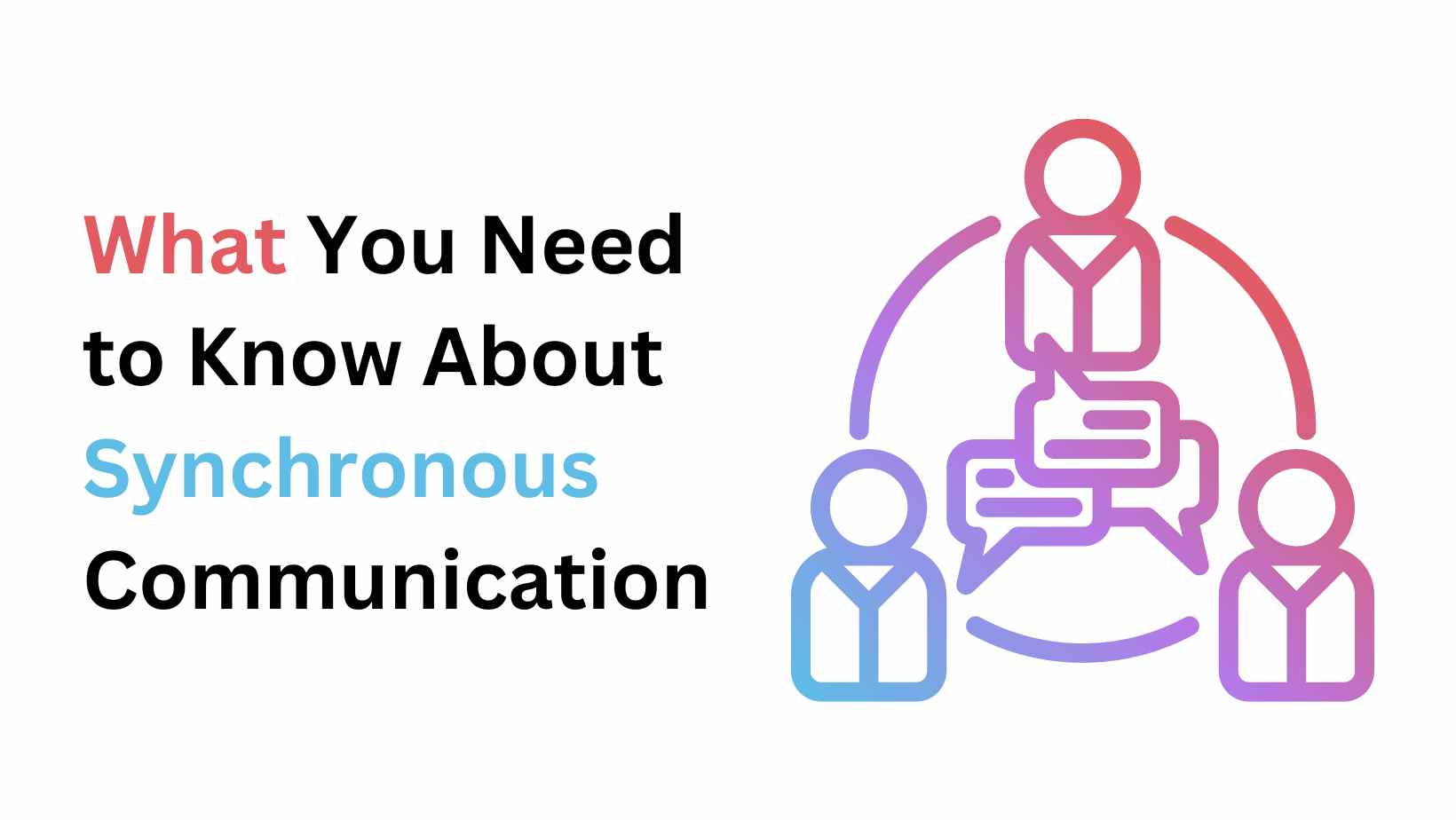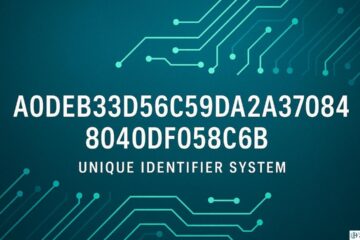In today’s rapidly evolving digital landscape, effective communication is paramount. One form of communication that plays a crucial role is synchronous communication. This article aims to provide a comprehensive understanding of synchronous communication, its significance, and how you can leverage it for successful interactions. Let’s dive into the world of synchronous communication and uncover its nuances.
What Is Synchronous Communication?
Synchronous communication, often referred to as real-time communication, involves interactions that occur simultaneously and instantaneously. It enables individuals to exchange information in real-time, bridging geographical and temporal gaps. Through various mediums such as text, audio, or video, synchronous communication offers a dynamic platform for seamless dialogue.
The Mechanics of Synchronous Communication
In a synchronous communication setup, participants engage in live conversations using various digital platforms. These platforms may include video conferencing tools, instant messaging apps, or virtual reality meeting spaces. The participants’ messages are received and responded to immediately, fostering dynamic interactions.
The Benefits of Synchronous Communication
Synchronous communication offers a plethora of benefits that contribute to efficient and effective interactions:
- Immediate Responses: One of the most significant advantages of synchronous communication is the instant exchange of information. It allows participants to receive immediate feedback, leading to quicker decision-making and issue resolution.
- Richer Interaction: Unlike asynchronous methods, synchronous communication allows for richer interactions. Facial expressions, tone of voice, and body language enhance the depth of understanding and foster stronger connections.
- Collaboration: Synchronous communication is instrumental in collaborative endeavors. Team members can brainstorm, discuss ideas, and work on projects in real time, irrespective of their physical locations. Businesses are using Microsoft Teams Operator Connect to establish a centralized communication platform.
- Personalization: Real-time interactions enable personalized communication, making participants feel valued and heard. This personal touch can enhance customer relationships and improve user experiences.
- Reduced Miscommunication: The instant nature of synchronous communication reduces the chances of misinterpretation or miscommunication, as participants can seek clarifications immediately.
Use Cases of Synchronous Communication
Synchronous communication finds application in various scenarios, including:
- Virtual Meetings: Synchronous communication is the cornerstone of virtual meetings, allowing participants to connect from different parts of the world seamlessly.
- Remote Work: In the era of remote work, synchronous communication tools facilitate team collaboration, updates, and discussions.
- Customer Support: Businesses utilize real-time chat and video calls to provide instant customer support, addressing concerns promptly.
- Online Learning: Educational institutions leverage synchronous communication for live lectures, interactive sessions, and real-time student engagement.
- Telehealth: The healthcare sector benefits from synchronous communication, enabling remote consultations and medical advice.
Best Practices for Effective Synchronous Communication
To make the most of synchronous communication, consider the following best practices:
- Choose the Right Medium: Select the appropriate communication medium based on the nature of the interaction. Video calls might be ideal for crucial discussions, while instant messaging is suitable for quick updates.
- Set Clear Objectives: Define the purpose and objectives of the communication to ensure all participants are on the same page.
- Be Mindful of Time Zones: In a global context, be considerate of different time zones to schedule meetings that accommodate participants’ availability.
- Active Listening: Practice active listening to fully comprehend the message being conveyed and respond appropriately.
- Minimize Distractions: Create a conducive environment for communication by minimizing distractions and focusing on the conversation.
Synchronous Communication in Various Sectors

Business and Remote Work
Synchronous communication has revolutionized the way businesses operate, enabling remote teams to collaborate seamlessly and maintain a sense of unity.
Education and E-Learning
In the realm of education, synchronous communication allows educators to conduct live online classes, engage with students, and recreate the classroom experience virtually.
Healthcare and Telemedicine
Synchronous communication plays a vital role in telemedicine, allowing patients to consult with healthcare professionals remotely and receive real-time medical advice.
Social Interaction and Networking
Social media platforms and video conferencing tools have leveraged synchronous communication, bringing people together for virtual events, webinars, and social interactions.
Tools and Technologies for Synchronous Communication

Video Conferencing Platforms
Platforms like Zoom, Microsoft Teams, and Google Meet offer video conferencing features that facilitate face-to-face conversations.
Instant Messaging Applications
Apps like Slack, WhatsApp, and Telegram enable quick text-based interactions, ideal for brief discussions and updates.
Virtual Reality Meeting Spaces
Emerging technologies are introducing virtual reality meeting spaces, where avatars of participants interact in a simulated environment.
Webinar and Live Streaming Platforms
Webinar platforms allow hosts to deliver presentations and engage with a live audience, fostering interactive seminars and workshops.
Tips for Effective Synchronous Communication

Set Clear Objectives
Define the purpose of the communication to ensure that participants stay focused and discussions remain on track.
Choose the Right Channel
Select the appropriate communication channel based on the nature of the conversation and the participants involved.
Active Listening
Engage in active listening to fully understand others’ viewpoints and contribute meaningfully to the discussion.
Manage Time Zones
When communicating across different time zones, schedule meetings at times that accommodate all participants.
Balancing Synchronous and Asynchronous Communication
While synchronous communication offers immediacy, asynchronous methods provide flexibility. Striking a balance between the two is essential for effective communication.
Future Trends in Synchronous Communication
As technology advances, we can expect enhanced features and integration of artificial intelligence in synchronous communication tools, making interactions even more seamless and intuitive.
Conclusion
In a world where effective communication is paramount, mastering synchronous communication is a valuable skill. Understanding its benefits, use cases, and best practices empowers individuals and organizations to engage in real-time interactions seamlessly. By embracing synchronous communication, you can build stronger connections, enhance collaboration, and ensure efficient dialogue in various contexts.
FAQs
How does synchronous communication differ from asynchronous communication?
Synchronous communication involves real-time interactions, while asynchronous communication does not require immediate responses and can occur at different times.
What technologies facilitate synchronous communication?
Various technologies, including video conferencing tools, instant messaging platforms, and live chat applications, enable synchronous communication.
Can synchronous communication be used for educational purposes?
Yes, synchronous communication is widely used in online learning for live lectures, interactive sessions, and real-time student engagement.
What role does synchronous communication play in remote work?
Synchronous communication is essential for remote work, enabling virtual team meetings, discussions, and updates.
How does synchronous communication enhance customer support?
Synchronous communication tools such as real-time chat and video calls allow businesses to provide instant customer support and address inquiries promptly.










